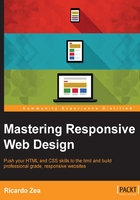
The <main> element
As per the Mozilla Developer Network (MDN) definition:
The HTML Main Element (
<main>) can be used as a container for the dominant contents of the document. The main content area consists of content that is directly related to, or expands upon the central topic of a section or the central functionality of an application. This content should be unique to the document, excluding any content that is repeated across a set of documents such as sidebars, navigation links, copyright information, site logos, and search forms (unless, of course, the document's main function is as a search form). Unlike<article>and<section>, this element does not contribute to the document outline.
Here are a few important points to remember about the <main> element:
Consider the following example:
<body>
<main class="main-container" role="main">Content goes here
</main>
</body>